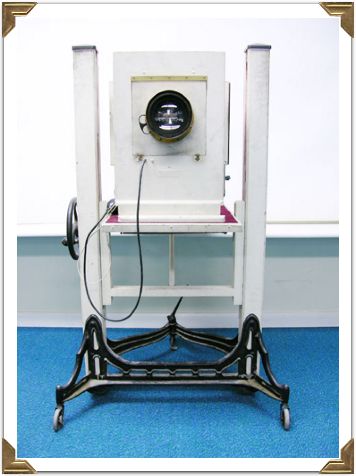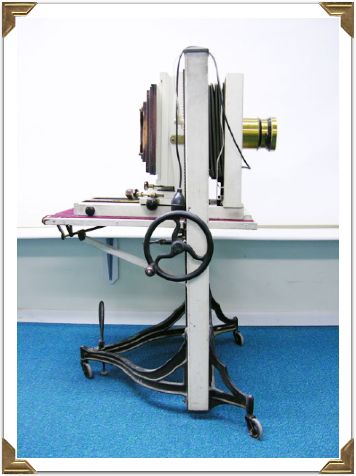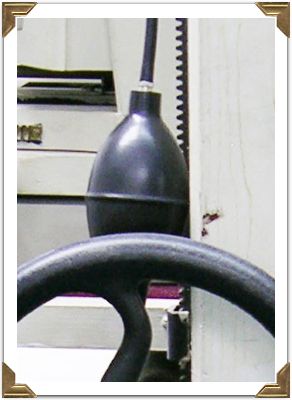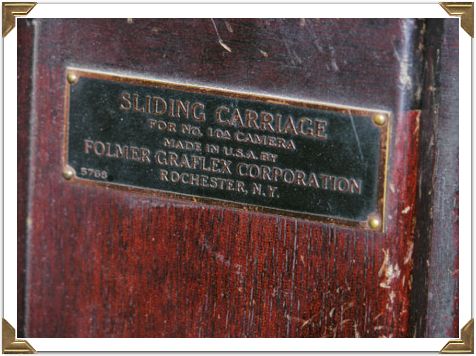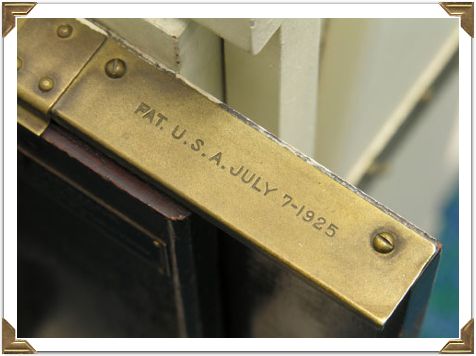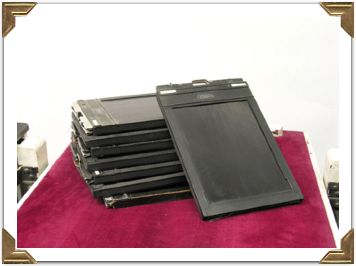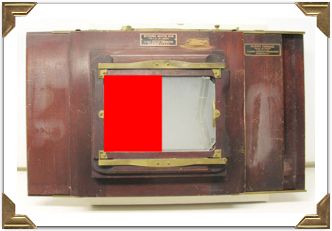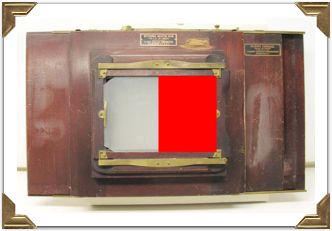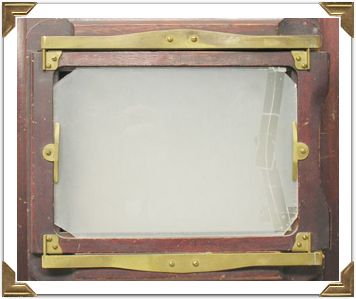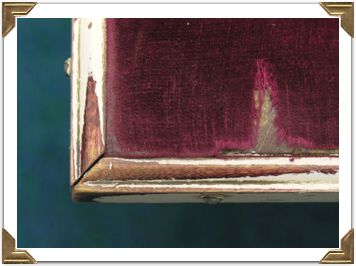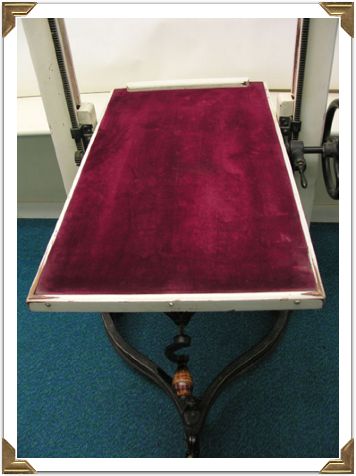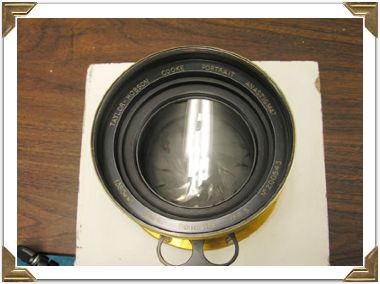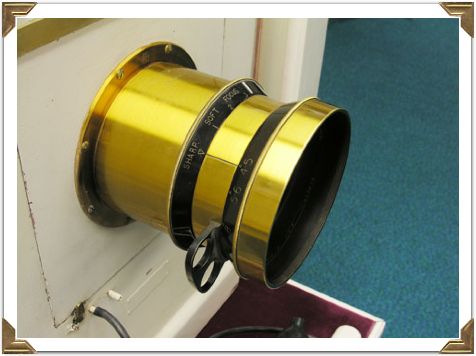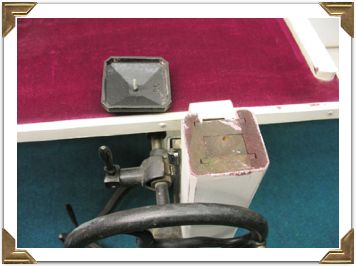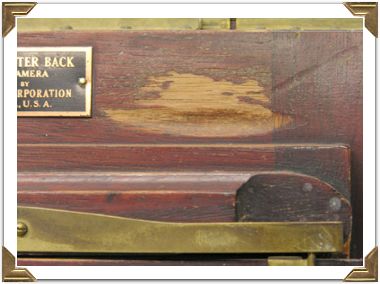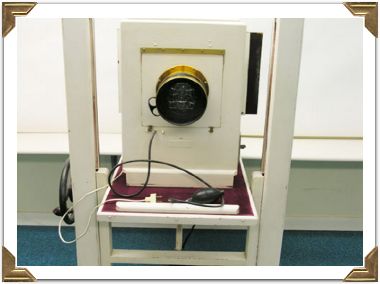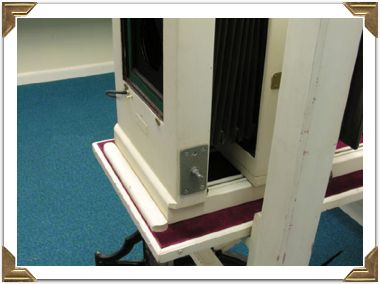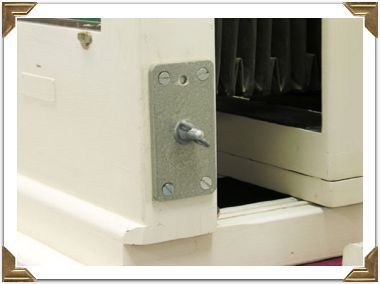
|
 |
  |
Return with us now to those thrilling days of yesteryear when all things photographic from Kodak Brownies to the best Bausch & Lomb lenses and including this splendid Folmar Graflex 10A Portrait Camera came from Rochester, NY.
|
 |
 |
 |
  |
The year was 1928, orthochromatic cellulose nitrate film was all the rage and exquisite Honduran mahogany was the wood of choice from which skilled craftsmen built a camera to last for generations. Not one piece of plastic went into its construction. Guaronteed!
|
 |
 |
 |
  |
This camera has taken many thousands of portraits and still performs exactly as it was intended with a choice between a single shutter speed of about 1/30th of a second and that infamous BULB setting providing infinite variations of the longer kind.
|
 |
 |
 |
  |
Speaking of the BULB, it’s in perfect shape. Do you know any other 80 year-olds that can say as much?
|
 |
 |
 |
  | To be totally honest, we don’t know that the camera is 80 years old. What we do know is that the sliding carriage for the film-holding back was patented in 1925.
|
 |
 |
 |
  | We also know that it’s a model 10A which Folmer Graflex began producing in 1928.
|
 |
 |
 |
  | So, what’s this “sliding carriage”? Well, first of all, this isn’t your daddy’s wimpy 35mm camera. This beast takes 5X7 sheets of film and produces two portraits on each sheet by means of its sliding back. With a different back, it can take 8X10 film, as well. By the way, the 5X7 Sheet film holders in the picture go with the camera. One’s even got a sheet of film in it.
|
 |
 |
 |
  | Anyway, the sliding carriage allows the back to slide to and fro to take two pictures on each piece of 5X7 film, first on one side . . .
|
 |
 |
 |
  | then on the other.
OK, I fudged on the picture, but you get the idea, don’t you?
The main thing is that it all works exactly like it was meant to, right?
|
 |
 |
 |
  | By the way, you might have noticed the ground glass is a bit the worse for wear. I like to look on that as a badge of honor, but you could also see it as a $2 fix at the glass shop.
did I mention the swings and tilts? It’s got ‘em. And they work just fine, too.
|
 |
 |
 |
  | If you haven’t been wondering about the “white” mahogany, you should be. No, it’s not the normal color. But are you old enough to remember the late 50’s craze for painting everything white? This venerable photoworker was a victim of that craze. The natural color of the wood shows through in this closeup.
|
 |
 |
 |
  |
You can also see a little damage in the previous picture to the fabric cover of the bed on which the camera rests. The rest of the cover is in quite good shape, though, as you can see.
|
 |
 |
 |
  | As fine as the original Bausch & Lomb lens is, the portraitist upgraded, as all photographers tend to do. In this case the upgrade was a British-made Taylor-Hobson Cooke 380mm ƒ4.5 Anastigmat Portrait lens, a beautiful cocoction of glass and brass.
|
 |
 |
 |
  | She’s got ƒ stops from 4.5 to 16, a setting for sharp focus and 3 for soft focus, not to mention leather front and rear caps.
And, as if it had to be said, there’s no plastic in this baby.
|
 |
 |
 |
  | There are a few other tiny things about this camera that keep it from being perfect: One of the steel caps on the stand has a screw that is too short to bite into the wood below, but that’s an easy fix and it’s been sitting in its place without being attached for God only knows how long anyway.
|
 |
 |
 |
  | Second, there’s a trough that’s been worn in the wood on the back from the fingernails of camera operators taking film in and out. That’s a badge of honor, if there ever was one. Imagine how many thousands of times it would take to do that to mahogany.
|
 |
 |
 |
  | There are also a couple of anomalies that we haven’t completely figured out. There’s an electric cord that’s been retrofitted into the works. It must have had something to do with a flash. It could be easily removed to seem like it was never there.
|
 |
 |
 |
  | There’s also a metal plate that was affixed to one side. It’s surely not original equipment and could be easily removed and all traces of it obliterated.
|
 |
 |
 |
  | See? 4 screws to take out, some wood putty to fill in, and Voila!
|
 |
 |
 |
  |
One final essential item: The bellows have no light leaks. Perfecto!
|
 |
 |
 |
  | This technological marvel comes with everything you see in these pictures, including both the Bausch and Lomb and Taylor-Hobson Cooke lens.
|
 |
 |
 |
  | Oh, yeah. Always one more thing! Before you make your bid, you need to think about Shipping.
|
 |
 |
 |
  | The buyer will pay and it won’t be cheap. The outfit, including camera, stand, 2 lenses and film holders weigh about 135 pounds and some of the several packages will be big. But there won’t be any handling charges, just the shipping and, if you’re smart, insurance at a dollar per hundred. We’ve estimated shipping UPS ground within the 48 contiguous states at $400 maximum. Some savings may be gained when it’s actually packed. It will definitely cost more to Alaska or Hawaii.
|
 |
 |
 |
  | We’re not selling this high tech beauty outside the US. The State Department probably wouldn’t like it.
|
 |
 |
 |
  | Payment will be through Paypal.
|
 |
 |
 |
  | And some assembly will be required. It’s been dis-assembled, because UPS wouldn’t take such a big package in one piece, but, fortunately, it’s simple to re-assemble and we have plenty of pictures to help with the project.
|
 |
 |
 |
  | This fabulous piece of technical/industrial art is, at least potentially, first-rate museum quality. It’s all original except for that coat of white paint that’s protecting the mahogany like an important archeological site preserved under an asphalt parking lot.
|
 |
 |
 |
  | So, what are you waiting for? You could be the new owner of the Grand Piano Cadillac of Cameras, the Folmer Graflex 10A, for only a few thousand dollars. This is a once in a lifetime opportunity. There just aren’t many of these around any more. Never have been. Have you ever seen another one? For sale? This is something nobody else on your block is gonna have. Now go make that bid!
|
 |
 |
|
